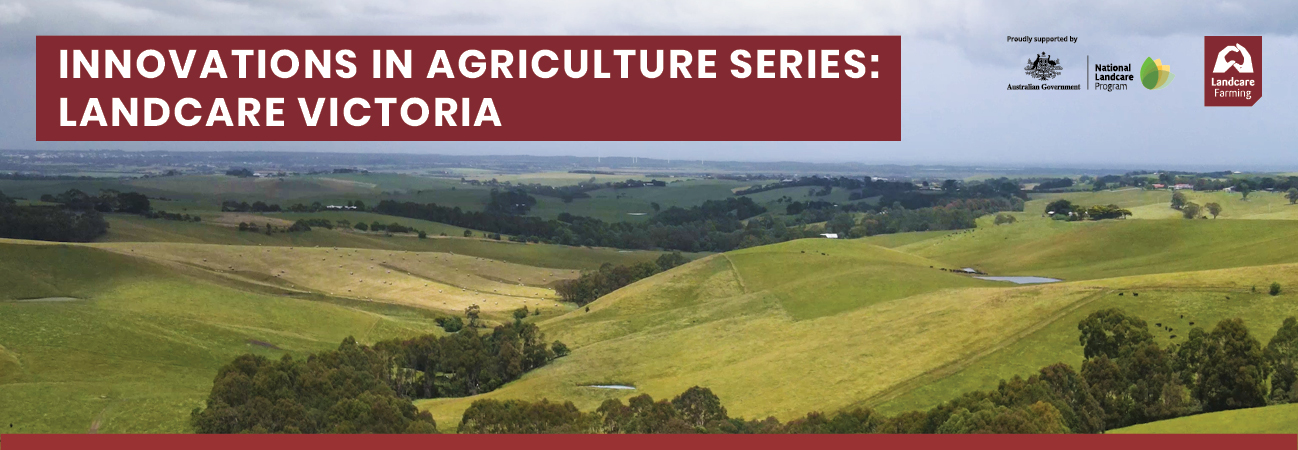
Dung Beetles Cruising the Hume Highway North and South.
This project, which is a joint collaboration between South West Goulburn Landcare Network and Gecko CLaN, has introduced two new species of dung beetles recently imported into Australia (Bubus bubalus and Onthophagus vacca). It is hoped these beetles will help fill the current four-month gap during spring into summer, when other existing introduced and native dung beetles are dormant. These new species will emerge early spring and be spring and summer active.
South West Goulburn Landcare Network Facilitator Sonia Sharkey explained spring and summer are often when dung loads on paddocks are higher, due to increased grass growth and the start of calving season.
“Fresh green grass equals more dung, plus calves on the ground are adding to the dung load,” Sonia explained.
“The existing beetles are also becoming much less active or dying off during winter and entering into spring, so much of the dung load remains on the ground.”
Nurseries
For this project, 12 nursery populations of dung beetles (six each per species) have been established on landcare member properties. A nursery consists of a small caged off area, which allows the beetles to safely breed, without the worry of predation, or dispersing. Beetles are harvested from the nursery and moved into a larger tent to further develop.
Greg Dalton from Creation Care supplied the beetles for this project and said that one of the key benefits of setting up nursery populations is that you get to test the beetles in local conditions.
“You can see how well they will reproduce on those sites and where they are successful,” Greg said.
“Another benefit of having beetles breeding in nurseries is that it can allow for multiple or ongoing releases and they can also become a local source of supply for neighbouring properties.”
Each nursery starts with 100 beetles, which are fed over their first active season, to allow numbers to increase. Each female beetle is able to lay up to 50 eggs before dying off. In the second season, the landholders feed the nursery, and harvest hatching pupae and place these into the larger tents and feed this system as well for the season. In the third season feeding starts again, but in the larger tent there should now be enough pupae hatching to be able to have the cows nearby, open them up and allow the third generation of beetles to fly to the dung out in the paddocks. The original nursery can then be moved to another landholder, who would start the process again; using 100 beetles collected from the original landholder and starting the feeding up process. They would then get the tent for the second season of harvesting.
Hilldene farmers Leigh Edwards Pam Beerens have set up a nursery on their property as part of the project.
“We set up the two nurseries, and then there’s also two extra confinement areas (tents) where we put the young dung beetles (from the nurseries) to grow and develop for the second part of the nursery process,” Leigh explained.
Tallarook cattle producer Anne Trevana is also growing dung beetles as part of this project and said that a major benefit of the nurseries is that they help to provide a measure of success for the project.
“We know how many went in there, and then we harvest and count how many we take out which gives us an idea of success,” she said.
“It also gives us some data to improve on each year. Eventually, we’ll be able to increase the dung beetle numbers by taking them and releasing them on other properties.”
Benefits of dung beetles
In Australia, cattle produce half a million tonnes of dung every day – readymade fertiliser. Entomologist and dung beetle expert John Feehan said the only issue is that it sits on top of the ground, where it provides little benefit to soil or pasture and can be washed into waterways.
He explained that dung beetles are simply recycling the dung and putting the nutrients back into the grass root zone, without the use of machinery, producing CO2, or the farmer’s time.
For each cow pat, an area about the size of a bicycle wheel benefits from dung beetle activity – down to a depth of around 300mm. By taking the dung down into the soil, they create tunnels which aerate the soil. The tunnel systems also allow for better water penetration.
“Heavy rain washes herbicides, insecticides, wetting agents, fertilisers and organic matter from dung and urine and other sources into creeks, rivers, estuaries and oceans,” John said.
“There is nothing better to prevent nutrient run-off than putting dung beetles into a paddock and water catchment areas.”
Gecko CLaN executive officer Kerri Robson said that by removing dung from paddock also helps to remove flies from the system, due to the lack of fresh dung as a breeding and food source for flies and maggots.
John said that there is evidence that dung beetle activity can reduce bush fly numbers.
He said that bush fly larvae need around six days in dung to mature.
“Dung beetles are capable of burying a two-litre cow pat in 24-72 hours. So, when they do that, they remove the breeding ground for the bush fly,” John said.
Because bush flies are a vector for the transmission of diseases such as pink eye, reducing fly numbers is not only of benefit to farmers economically, but also for animal welfare.
Kerri said that so far, the project has been a great success.
“We identified the problem which was that there was – we only had activity at certain times through the year,” she said.
“Now with this project, we have a joint venture between two Landcare Networks, and we’ve been able to offer landholders and farmers year round activity with dung beetles, which is the best value for the environment and for the farmer as well.”
This case study was produced as part of the Landcare Farming Innovations in Agriculture Series. Supported by the Australian Government’s National Landcare Program, the Landcare Farming Innovations in Agriculture Series is managed in partnership by Landcare Australia and the National Landcare Network.
More Innovations in Agriculture stories from Landcare Victoria:
- Improving and quantifying on-farm biodiversity creates business benefits
- Planting with Benefits – Bass Coast Biolinks
- Combined business and biodiversity benefits result from transformative whole farm plan







